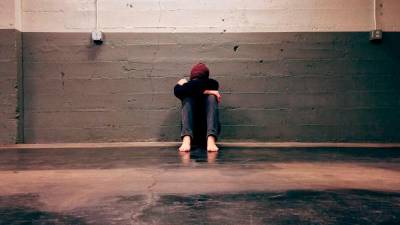BULLYING is no longer confined to schools; it has infiltrated chat rooms, social media feeds and gaming platforms, creating an environment where harassment is constant, public and hard to escape.
In Malaysia, rising numbers of bullying cases offline and online are now colliding with another disturbing trend: increasing adolescent suicide risk.
Rising tide of bullying
The recent national figures paint a stark picture:
School bullying cases: The Education Ministry recorded 4,994 cases from January to October 2023. By October 2024, this figure had surged to 6,208 cases, reflecting a sustained upward trajectory.
Cyberbullying enforcement: The Malaysian Communications and Multimedia Commission received 8,399 cyberbullying-related reports in the first 11 months of 2024, an average of 27 per day. A total of 8,756 harmful posts were removed in 2024, almost five times more than in 2023.
Calls for stronger legal and procedural remedies in 2025 have been growing, with experts urging schools to treat serious bullying as a potential criminal matter, not just a disciplinary breach.
Based on a 2022 research study I conducted with over 800 teenage and adolescent participants, findings showed that cyberbullying and “fear of missing out” (Fomo) are key contributing factors for the rise in mental health issues among young people.
Fomo – a persistent anxiety about being excluded from rewarding experiences – can push adolescents into unhealthy online habits, where comparison, competition and approval-seeking dominate.
Some teenagers, fearing social exclusion, join in bullying behaviour to gain acceptance from their peer group or avoid becoming targets themselves.
Furthermore, social media amplifies this dynamics. The more they witness peers engaging in harmful behaviour, the more normalised it feels. This peer-pressure-meets-online-influence cycle can turn otherwise empathetic teenagers into active participants in bullying.
Emotional fallout
The psychological damage is rarely confined to the immediate moment of bullying. Feelings of rejection or social exclusion can:
Intensify loneliness and isolation.
Reduce help-seeking behaviours due to shame or fear of retaliation.
Heighten vulnerability to self-harm behaviours or suicidal tendencies.
This is especially dangerous when online harassment follows teenagers into their bedrooms at night, eliminating what used to be a safe space away from school.
Latest national picture
According to the National Health and Morbidity Survey 2022, adolescent health offers sobering statistics:
13.1% of Malaysian adolescents aged 13 to 17 experienced suicidal thoughts in the past year.
10% had made a suicide plan.
9.5% had attempted suicide.
26.9% showed symptoms of depression.
These are the most recent nationwide figures and they highlight the urgency of mental health screening for bullied or socially excluded youths.
Recognising warning signs
Whether the trigger is bullying, peer pressure or rejection, the red flags for suicidal risk are similar:
Talking or posting about death due to hopelessness or being a burden.
Sudden withdrawal from friends, family or hobbies.
Major changes in sleep, appetite or mood.
Self-harm marks or risky, impulsive behaviours.
Declining school attendance or performance, especially after social conflicts.
If any of these signs appear, immediate professional assessment is critical.
Breaking the cycle
Parents:
Model healthy online habits and boundaries.
Encourage open conversations about peer pressure and digital behaviour.
Document and report bullying incidents early.
Schools:
Implement whole-school anti-bullying policies with clear definitions and confidential reporting.
Integrate digital citizenship and social pressure awareness into the curriculum .
Engage parents in workshops to align home and school responses.
Clinics and mental health services:
Screen for bullying involvement (as victim, perpetrator or both).
Assess for suicidal risk in any teenager presenting bullying-related distress.
Offer therapy focused on resilience, social skills and healthy peer relationship building.
Bullying is not a harmless rite of passage; it is a risk factor for lifelong mental health struggles and, in worst cases, can trigger suicide.
What front-line educators and clinicians are seeing daily is cyberbullying, amplified by peer influence, shaping how young feel about themselves, their friendships and their worth.
By acknowledging the social forces that drive bullying and addressing the fear of exclusion at its core, we can protect young people not only from harm but also from the isolation and despair that often follow.
If you are concerned about your child’s mental health, seek help or consult a psychologist.
Ummu Nazra Nadzam is a clinical psychologist at Ampang Puteri Specialist Hospital. Comments: letters@thesundaily.com
